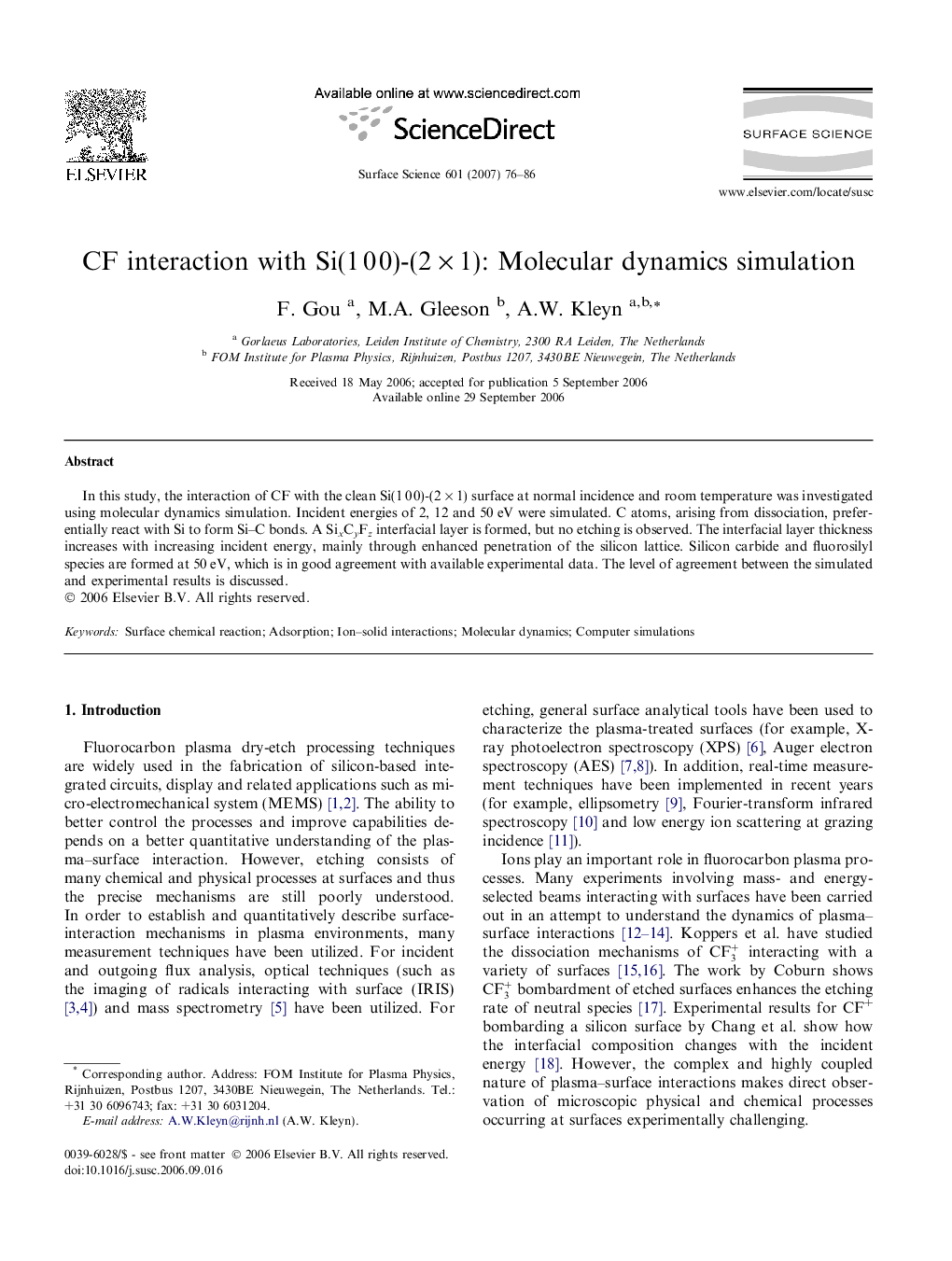| Article ID | Journal | Published Year | Pages | File Type |
|---|---|---|---|---|
| 5426230 | Surface Science | 2007 | 11 Pages |
Abstract
In this study, the interaction of CF with the clean Si(1Â 0Â 0)-(2Â ÃÂ 1) surface at normal incidence and room temperature was investigated using molecular dynamics simulation. Incident energies of 2, 12 and 50Â eV were simulated. C atoms, arising from dissociation, preferentially react with Si to form Si-C bonds. A SixCyFz interfacial layer is formed, but no etching is observed. The interfacial layer thickness increases with increasing incident energy, mainly through enhanced penetration of the silicon lattice. Silicon carbide and fluorosilyl species are formed at 50Â eV, which is in good agreement with available experimental data. The level of agreement between the simulated and experimental results is discussed.
Keywords
Related Topics
Physical Sciences and Engineering
Chemistry
Physical and Theoretical Chemistry
Authors
F. Gou, M.A. Gleeson, A.W. Kleyn,
